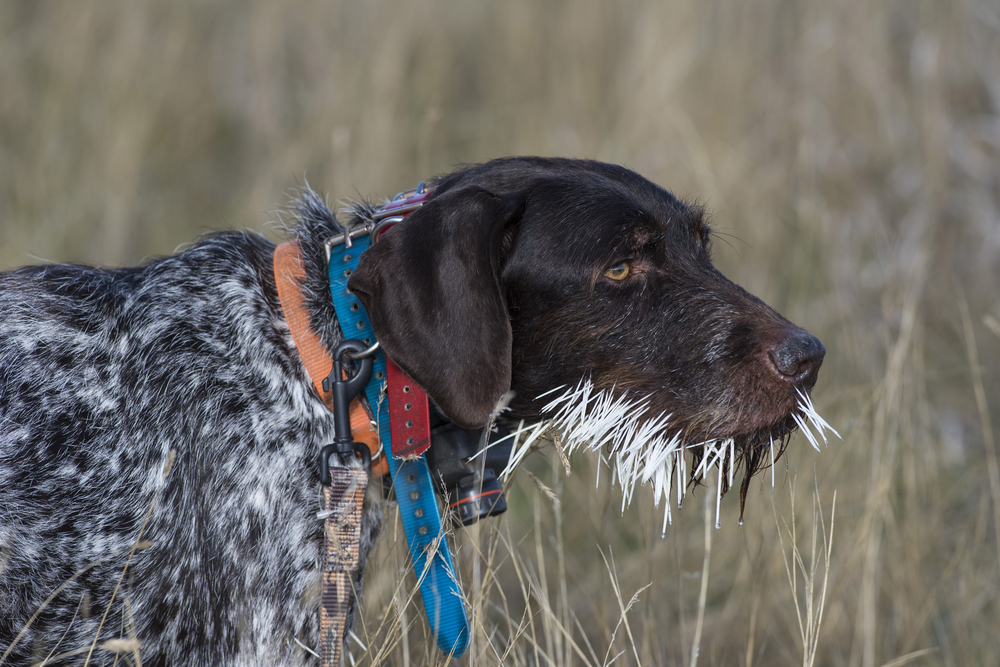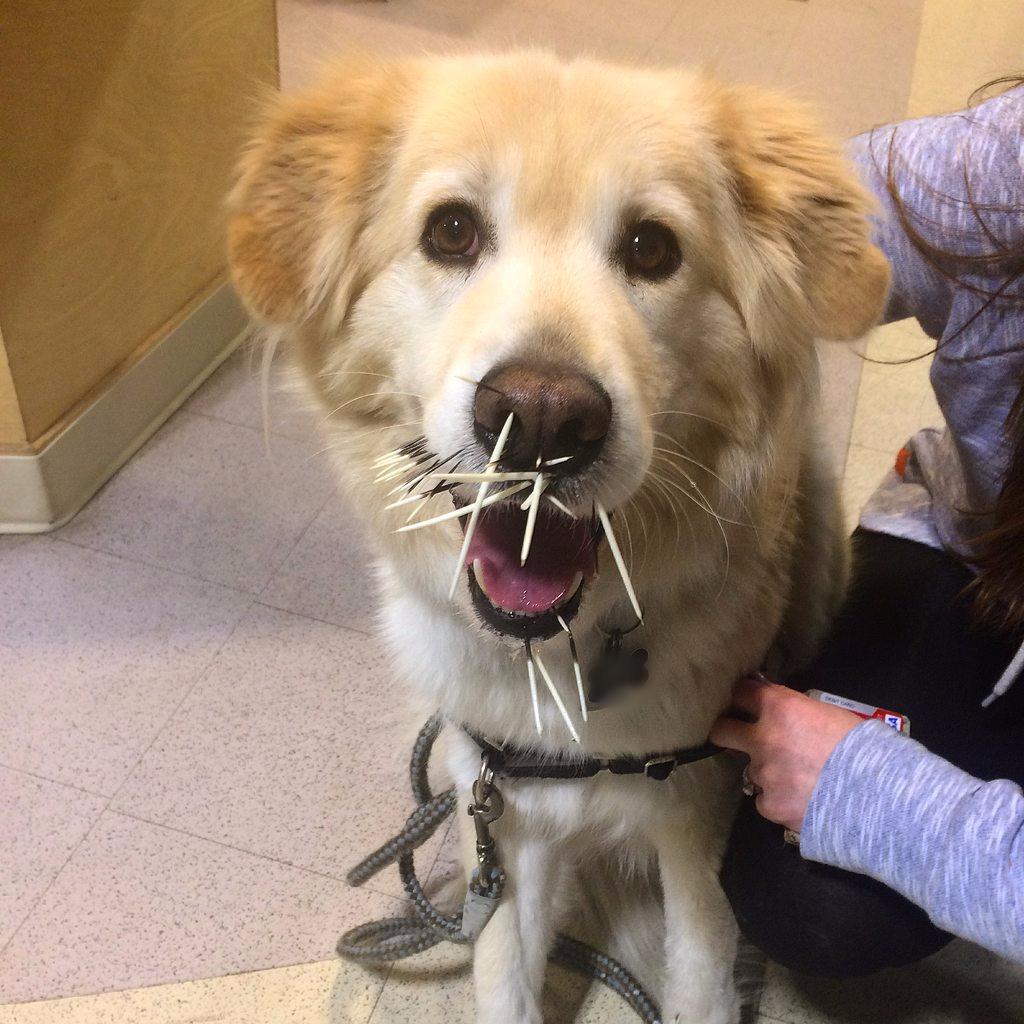A Prickly Problem: Porcupines and Pets

Porcupines and pets don’t mix very well. Imagine you are enjoying the great outdoors with your dog. It’s a beautiful day. All of a sudden, your dog yelps. A few moments later he wanders into view with quills sticking out of his face and chest. Ouch! What do you do?
The team at OVRS hears many tales of dogs (sometimes even cats) who wandered a little too close to a porcupine. These quills bring trouble when not removed quickly. We are here to help you learn more about porcupines and their quills, and how you can avoid an emergency situation with your pet.
Porcupines and Pets: All About the Quill
The North American porcupine has over 30,000 quills and about 700-800 barbs (a hook-like formation at the top of the quill). Porcupine quills are large, stiff hairs and are hollow, like a feather. The outside is coated with keratin, the same hard material in fingernails and scales, but they feel soft when laid back against the porcupine’s body.
Quills are how porcupines protect themselves from animals they see as predators. Contrary to popular belief, porcupines don’t throw their quills at their victims. They “shed” the quills and dislodge them when another animal comes too close. This is why it’s common for curious canines to get quills stuck in their noses and face when they lean in to investigate.
The barb at the top of a quill is designed to remain embedded. Its curved or anchored tip doesn’t want to come out without a lot of struggle.
The Dangers of Embedded Porcupine Quills
Porcupine quills cause pain, but an unremoved quill can cause serious problems. Quills can gradually work their way into the body. A quill located on the chest can move inward toward the internal body and lungs. A quill on the face can make its way into the eye. Serious cases require surgical removal. Quills can also cause infection and abscess when embedded in the body too long.
When you’re inspecting your dog for quills, it’s easy to miss some, especially if they are in areas that are hard to spot. Signs that quills are still there include:
- Head shaking
- Pawing at face or ears
- Drooling
- Lameness
- Crying/pain

Remove all quills within 24 hours to avoid secondary infection and scarring. Get your pet in to see your veterinarian or go to an animal emergency hospital right away if your pet has encountered a porcupine.
Resist the Urge to Remove Quills
There is a lot of DIY “how to remove porcupine quills” information online, but we strongly recommend letting a veterinarian do it. Quills have anchored barbs that do not come out easily. Removing them can also cause serious pain to your pet.
During quill removal, your veterinarian will sedate your pet to avoid further pain. This will also allow them to thoroughly examine your pet for hidden quills in areas that can bring about lasting damage if not properly removed.
Despite popular advice, do not cut the quill prior to removal as this can cause the quill to splinter and cause more problems.
If you have any questions about avoiding wildlife encounters or porcupines and pets, please do not hesitate to call us.


